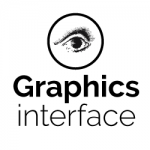Kim Davidson and Greg Hermanovic are entrepreneurs, animation and visual effects technologists, and Canadian Digital Media Pioneers. Kim and Greg co-founded SideFX Software in 1987 after buying the rights to the 3D animation software PRISMS from the receivers for Toronto-based Omnibus Computer Graphics after Omnibus filed for bankruptcy. Kim and Greg had helped develop PRISMS and knew that it had great potential. They had to put their own money into the purchase and borrowed more, which meant they were taking a big risk. But the risk paid off. Under their leadership, SideFX became a world leader in advanced 3D graphics, animation, and visual effects software for their PRISMS and later their Houdini 3D software packages. Both packages provide a procedural building-block architecture that supports simulation of natural phenomena using particle effects and complex three-dimensional models. Houdini has been a mainstay for major film producers in Hollywood and elsewhere for almost three decades.
SideFX is currently the only major Canadian-owned animation software company, tracing its roots back to the early days when Canada was a hotbed for new animation software products. Over the years, the company has provided an opportunity for some of the best and brightest developers to practice their trade in Canada while making an impact on the global entertainment industry with their software releases. PRISMS was written in the C programming language. Its core program was Action, released in 1988. Action was the first to integrate in one program animated motion, modelling, lighting and scripting. The most far-reaching innovation that set PRISMS apart in the industry was the introduction of SOPs (Surface Operators). SOPs were a procedural modelling technology that put a real-time user interface on a family of built-in surface manipulation operators that, prior to Action, were composed laboriously in non-real-time using batch UNIX scripts that ran a separate UNIX process per operator. Action’s SOPs gave immediate visual feedback as the artist worked. With the addition of math expressions that could be put in the surface operators’ parameters, artists could immediately see dynamic 3D shapes animating. This speeded up their workflow, something that was welcomed in the Hollywood film post-production industry. Before Houdini shipped, several modules written in C++ were included as well. These included SAGE for geometry editing, Jive for editing motion channels, Lava for editing materials, Mojo for image morphing, Moca for motion control, and ICE for interactive compositing. The Houdini 3D package combined all these C++ programs into one program and eventually became the successor to PRISMS. Houdini was the first major 3D application to run on Linux.
A number of industry firsts were achieved by SideFX as they brought new ideas from the research community to market in their commercial software packages: first GUI for a procedural modeling system (1987), first expression language in the GUI (1988), first polygon reduction tool and use of “metaballs” as primitives (1989), first particle system and morphing (1992), first integrated motion capture and time frame sampling (1993), first to support NURBS, polygons, and Beziers as “equal citizens” (1995), and first procedural particle system and hierarchical spline models (1998).
SideFX software was quickly adopted by the film industry and later the game industry, in large part because of the flexibility it provides through its procedural approach. In 1997, the film “Titanic” made significant use of SideFX software and “Contact” was one of the first major motion picture films to use Houdini, including for its incredible opening sequence. The film “What Dreams May Come” used Houdini as a primary tool and subsequently won an Oscar for Best Visual Effects in 1999. It was one of many films that were by then relying on SideFX software for visual effects. In recognition of their contribution to the industry, Davidson and Hermanovic and their colleagues have received three awards from the Academy of Motion Picture Arts and Sciences. The first was a Technical Achievement Award from the Academy for their work at SideFX pioneering procedural animation Prisms software in 1998. The second was a Scientific and Engineering Award in 2003 shared with Mark Elendt and Paul Breslin for SideFX’s continued development of the procedural modeling and animation components of Prisms as exemplified in the Houdini software package. A third Academy Award went to SideFX for Andrew Clinton and Mark Elendt’s invention and integration of micro-voxels in the Mantra software.
Biographies
Kim Davidson and Greg Hermanovic met at HCR, an innovative Toronto-based software company that was started by Professor Ron Baecker. They later joined Omnibus Computer Graphics and from there founded Side Effects.
Kim Davidson is a Canadian artist and computer scientist with a passion for computer graphics and animation. Inspired by Saturday-morning cartoons, Davidson built his own animation studio in his parents’ basement when he was a teenager. After deciding to study architecture rather than animation, he earned a double degree in architecture and computer science at the University of Waterloo in 1978. He joined HCR in the early 1980s and Omnibus Computer Graphics as a programmer in 1985 and then in 1987 he co-founded SideFX, where he continues to serve as President and CEO. In addition to the multiple awards he has received with the team at SideFX, Kim received the J.W. Graham Medal from the University of Waterloo’s Faculty of Mathematics in 1999, in recognition of his many contributions to advanced 3D graphics, animation, and special effects. Kim’s love of animation also led him to co-found Catapult Productions in 1992 with Mark Mayerson. Kim served as President and Executive Producer at Catapult for the children’s series “Monster by Mistake” for which Catapult created over 50 half-hour segments that appeared in over 30 countries around the world.
Greg Hermanovic is a Canadian physicist and engineer with a deep interest in developing interactive software tools for artists. After drawing his first pixel on a DEC PDP-11 CRT in 1974 in the Atlantic Ocean on a UN weather research project, he found himself in aerospace engineering helping develop the real-time training simulator for the CanadArm robotic manipulator of the US Space Shuttle. Greg joined HCR in the early 1980s, where he was exposed to the first UNIX operating systems and various computer music languages, and then Omnibus Computer Graphics in 1984, where he served as head of R&D. He co-founded SideFX Software in 1987, where he helped design and engineer PRISMS and Houdini. Greg’s final contribution to Houdini was the CHOPS (Channel Operators) subsystem for procedurally manipulating motion and sound. CHOPS received an industry Innovation Award from Computer Graphics World magazine. Greg’s ultimate goal was to develop artists’ tools that facilitated the authoring and performing of real-time computer-generated visuals co-ordinated with sound and physical devices. He left SideFX in 2000 to found a new company, Derivative, and pursue the nascent market of authoring tools for interactive experiences. Greg currently leads the team at Derivative developing TouchDesigner, now used for diverse applications such as large-scale architectural projection mapping, show control for live performances in music and theatre, immersive audio-visual experiences, experimental art, VR and high-resolution multi-screen video playback. TouchDesigner was used on-set for the films “Gravity” and “Alien Covenant”, by Rush and Nine Inch Nails for real-time tour visuals, and by Walt Disney Imagineering to create interactive animation theme park experiences.






